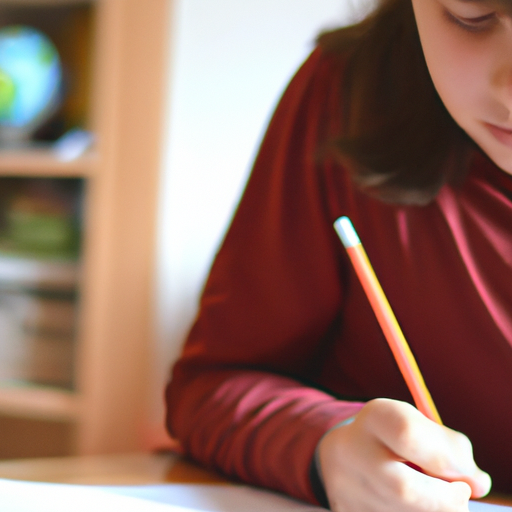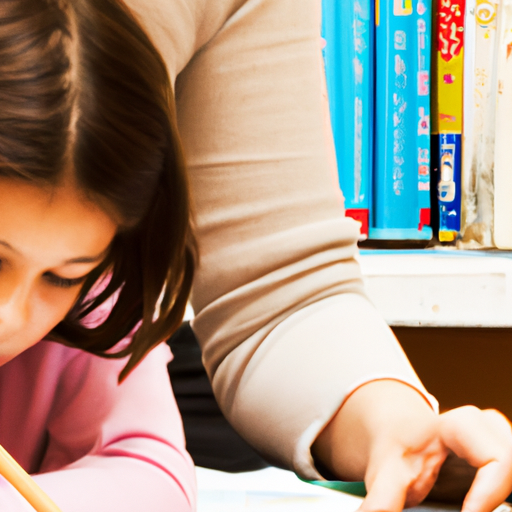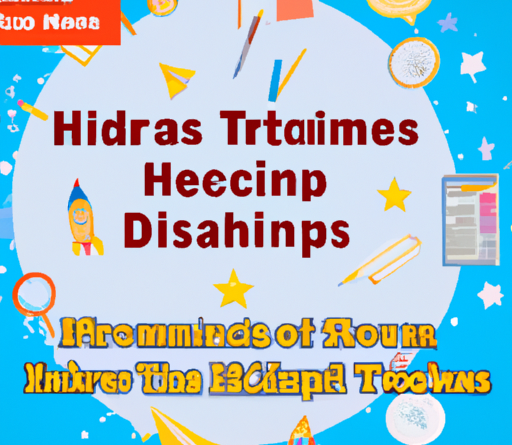When it comes to understanding how your child learns best, it can sometimes feel like you’re playing a guessing game. That’s why it’s essential to determine your child’s learning style, so you can provide them with the right support and resources. In this article, we will explore different strategies and methods to help you identify your child’s learning style. By understanding their preferences and strengths, you can tailor their education to suit their unique needs.
Are you curious to know how your child learns best? In this article, you’ll discover various indicators and techniques to determine your child’s learning style. Understanding whether they are visual, auditory, or kinesthetic learners will enable you to adapt teaching methods and create an environment that enhances their learning experience. By identifying your child’s learning style, you can equip them with the tools they need to thrive academically and enjoy the process of acquiring knowledge. Stay tuned to learn more about how you can effectively determine your child’s learning style and pave the way for their educational success.
Understanding Learning Styles
What are learning styles?
Learning styles refer to the different ways in which individuals prefer to absorb, process, and retain information. Every child has a unique learning style that suits their cognitive preferences and abilities. These styles can be broadly categorized into three main types: visual, auditory, and kinesthetic. Visual learners rely on visual aids and images, auditory learners prefer verbal explanations and discussions, while kinesthetic learners thrive through hands-on activities and movements.
Why is it important to determine your child’s learning style?
Identifying your child’s learning style is crucial for their academic success and overall development. By understanding how your child learns best, you can tailor their educational experiences to match their preferences, strengths, and weaknesses. When children are taught in a way that aligns with their learning style, they are more likely to feel engaged, motivated, and confident in their abilities. Additionally, recognizing and respecting different learning styles promotes inclusivity and ensures that every child has equal opportunities to succeed.
How do learning styles impact education?
Learning styles have a significant impact on education as they influence how information is presented and absorbed. Traditional teaching methods often rely heavily on lecture-style instruction, which may not effectively cater to all learning styles. When children are taught using methods that are incompatible with their learning style, they might struggle to understand and retain information.
By incorporating different teaching strategies that align with each learning style, educators can create a more dynamic and inclusive learning environment. This approach allows students to interpret information in a way that makes sense to them, enhancing their understanding and retention of the material. Additionally, acknowledging and addressing learning styles can help educators identify and accommodate students with learning difficulties or special educational needs.
Identifying Your Child’s Learning Style
Observing your child’s behavior and preferences
One of the most effective ways to determine your child’s learning style is through close observation of their behavior and preferences. Take note of how they interact with their surroundings, how they engage with different types of media, and what activities they gravitate towards. For example, visual learners may enjoy looking at pictures, watching videos, or doodling during class, while auditory learners might prefer listening to podcasts or participating in discussions.
Considering your child’s strengths and weaknesses
Another important aspect of identifying your child’s learning style is considering their strengths and weaknesses in different academic areas. Notice if they excel at tasks that involve visual elements, such as drawing or reading maps, which may indicate a visual learning preference. On the other hand, if your child shows exceptional listening and speaking skills, they might lean towards being an auditory learner.
Using learning style assessments
To further validate your observations, you can also utilize learning style assessments designed specifically for children. These assessments typically consist of a series of questions or activities that help identify your child’s dominant learning style. Many online resources and educational websites offer these assessments for free. While these assessments can provide valuable insights, it’s important to remember that they should only be used as a guide and not as the sole determining factor of your child’s learning style.
Visual Learners
Characteristics of visual learners
Visual learners have a strong preference for visual aids and rely on visual stimuli to process and comprehend information. They tend to have a good memory for images, shapes, and colors. Visual learners often excel at tasks that involve reading, writing, drawing, and interpreting graphs or charts. They may also benefit from visual cues and organizational tools, such as color-coding or mind maps.
Teaching strategies for visual learners
To effectively teach visual learners, educators and parents can incorporate various strategies into their teaching methods. Using visual aids such as diagrams, charts, and infographics can help visualize complex concepts and make them easier to understand. Utilizing multimedia resources, such as educational videos or interactive presentations, can also enhance the learning experience for visual learners. Additionally, encouraging note-taking, drawing, and visualizing information through mind maps or graphic organizers can aid in their comprehension and retention.

Materials and resources for visual learners
When selecting materials and resources for visual learners, prioritize those that offer visual stimulation. Books with colorful illustrations, educational websites with engaging visuals, and interactive learning apps can captivate visual learners’ attention and enhance their learning experience. Utilizing flashcards, posters, and educational games can also be effective tools for reinforcing concepts and facilitating visual learning.
Auditory Learners
Characteristics of auditory learners
Auditory learners demonstrate a preference for verbal explanations, discussions, and sound-based learning. They have an excellent sense of hearing and can easily absorb information through listening and speaking. Auditory learners often excel at tasks that require sound discrimination, such as learning languages, and they find pleasure in music and rhythmic activities.
Teaching strategies for auditory learners
To accommodate auditory learners, educators and parents can incorporate specific teaching strategies into their approach. Engaging in discussions, providing verbal explanations, and encouraging questions and answers can help auditory learners process information effectively. Utilizing audiobooks, podcasts, and recorded lectures can also enhance their learning experience. Additionally, incorporating mnemonic techniques, such as creating rhymes or songs, can aid auditory learners in retaining information.
Materials and resources for auditory learners
When selecting materials and resources for auditory learners, focus on those that provide audio stimulation. Audiobooks, podcasts, and educational videos with clear narration can captivate auditory learners’ attention and facilitate their understanding. Encouraging them to record and listen to their own voice while studying can also be beneficial, as it allows them to reinforce their learning through speech.
Kinesthetic Learners
Characteristics of kinesthetic learners
Kinesthetic learners thrive through hands-on experiences and physical movements. They have a strong need for sensory stimulation and often struggle to sit still for long periods. Kinesthetic learners excel at tasks that involve physical activity, such as sports or building things. They may have a good sense of body awareness and tend to use gestures and movements while speaking.
Teaching strategies for kinesthetic learners
To effectively teach kinesthetic learners, educators and parents must incorporate a variety of hands-on activities and movement into their lessons. Providing opportunities for practical experimentation, such as science experiments or role-playing, can activate kinesthetic learners’ engagement and enhance their understanding. Incorporating manipulatives, such as puzzles, building blocks, or modeling clay, can also promote learning through touch and movement. Additionally, encouraging physical activities, such as taking short breaks for stretching or incorporating movement into learning games, can boost kinesthetic learners’ participation and learning outcomes.
Materials and resources for kinesthetic learners
When selecting materials and resources for kinesthetic learners, prioritize those that offer tactile and movement opportunities. Interactive learning apps, educational games that involve physical activity, and physical manipulatives can engage kinesthetic learners and facilitate their understanding. Utilizing hands-on experiments, field trips, and outdoor activities can also provide kinesthetic learners with a rich and immersive learning experience.
Creating a Supportive Learning Environment
Adapting the environment to match your child’s learning style
To create a supportive learning environment, it’s essential to adapt the physical space and resources to match your child’s learning style. For visual learners, provide ample visual aids, such as posters or charts, and ensure good lighting for reading and writing. For auditory learners, select a quiet area for studying and provide access to headphones or audio resources. For kinesthetic learners, allow for movement and provide a space where they can engage in hands-on activities without restrictions.

Collaborating with teachers and educators
Collaborating with your child’s teachers and educators is crucial in ensuring their learning style is accommodated in the classroom. Share your observations and insights regarding your child’s learning style with their teachers. Together, you can explore different teaching strategies and materials that align with your child’s preferences. Additionally, maintain open communication with teachers to stay updated on your child’s progress and any necessary adjustments that need to be made.
Promoting self-awareness and independence
Encouraging your child to become self-aware of their own learning style is a valuable skill that will benefit them throughout their educational journey. Teach them to recognize their preferred methods of learning and empower them to communicate their needs to teachers and peers. Encourage them to explore and try different learning techniques to discover what works best for them. By promoting self-awareness and independence, you are equipping your child with the tools to become an active and engaged learner.
Benefits of Understanding Your Child’s Learning Style
Improved academic performance
When children are taught in a way that aligns with their learning style, they are more likely to understand and retain information. This can result in improved academic performance, as they can grasp complex concepts more easily and apply them effectively. By tailoring their educational experiences to their learning style, you are setting them up for success and helping them reach their full potential.
Increased motivation and engagement
When children are taught using strategies that match their learning style, they are more likely to feel motivated and engaged in their learning. They will enjoy the process of acquiring knowledge and be more eager to participate in activities. This increased motivation can lead to a love for learning and a desire to explore new subjects and ideas.
Enhanced communication and relationship with your child
Understanding your child’s learning style can strengthen your communication and relationship with them. By recognizing and acknowledging their unique way of learning, you are demonstrating support and validation for their individuality. This understanding allows for more effective conversations about their academic progress, challenges, and goals. It also helps you provide personalized guidance and support based on their specific needs.
Challenges and Limitations
Limitations of relying solely on learning styles
While learning styles are valuable tools for understanding how individuals process information, it’s important to recognize their limitations. Some research suggests that the concept of learning styles may oversimplify the complexity of human cognition and may not be a reliable predictor of educational outcomes. In addition, individuals may have a blend of different learning styles or exhibit different preferences depending on the subject or context. Therefore, it is important to consider learning styles as one aspect of a holistic approach to education.
Overcoming challenges in accommodating different learning styles
Accommodating different learning styles can be challenging, particularly in a classroom setting with limited time and resources. However, with proper planning and flexibility, educators can incorporate various teaching strategies that cater to different learning styles. This may involve the use of multisensory materials, differentiation of instruction, and incorporating group activities that allow for collaboration and peer learning. It is essential for educators to continually reflect and adapt their methodology to better address the diverse needs of their students.
Addressing individual differences within a learning style
While learning styles provide a general framework for understanding how individuals learn, it is important to remember that each child is unique. Within a specific learning style, there can be significant variations in preferences, strengths, and weaknesses. It is crucial to pay attention to individual differences and tailor instruction accordingly. Flexibility, personalization, and ongoing assessment are key to addressing the diverse needs of students and ensuring their educational journey is fulfilling and productive.
Utilizing Multiple Learning Styles
Integrating different strategies for effective learning
To create a balanced and inclusive approach to education, it is essential to integrate different teaching strategies that cater to multiple learning styles. Utilize a variety of instructional methods, such as visual aids, verbal explanations, hands-on activities, and multimedia resources. By incorporating different modalities, you can accommodate a wider range of learning preferences and engage students with diverse learning styles.
Creating a balanced and inclusive approach
A balanced and inclusive approach to education involves providing opportunities for students to learn and demonstrate their understanding in ways that align with their learning styles. This can be achieved through a combination of whole-class instruction, small-group activities, and individualized tasks that cater to the different learning preferences within the classroom. By fostering an environment that embraces diversity and supports individual strengths, you can create a positive and inclusive learning experience for all students.
Encouraging exploration and flexibility
Encourage your child to explore and experiment with different learning techniques and strategies. While it is important to recognize and cater to their preferred learning style, it is also beneficial for them to develop skills in other modalities. By exposing them to multiple learning styles, you are equipping them with a versatile set of learning tools that they can utilize in various academic and real-life contexts. Promote flexibility and adaptability, as these qualities are essential for lifelong learning.
Conclusion
Recognizing your child’s learning style is a valuable step towards enhancing their educational journey. By identifying their preferences, strengths, and weaknesses, you can tailor their learning experiences to suit their unique needs. Remember that learning styles are not fixed, and children may exhibit different preferences depending on the context and subject matter. Continually assess and adapt your approach to ensure ongoing support and empowerment for your child. By understanding their learning style and creating a supportive environment, you are nurturing their potential and fostering a lifelong love for learning.
toto slot
cabe4d
toto slot
toto slot
toto slot
bandar toto macau
prediksi hk
situs togel
toto slot
situs togel
situs togel
situs togel
situs toto
cabe4d
cabe4d
bandar togel
situs togel
toto slot
situs toto
situs toto
data hk
situs togel
situs togel
slot mahjong
prediksi hk
situs toto
bandar togel
situs togel
toto slot
situs toto
cabe4d
cabe4d
situs toto
bandar togel
situs togel
https://www.metrouniv.ac.id/data/
toto slot
cabe4d
bandar togel
cabe4d
situs slot
https://oiald.unimen.ac.id/data/
slot mahjong
slot mahjong





